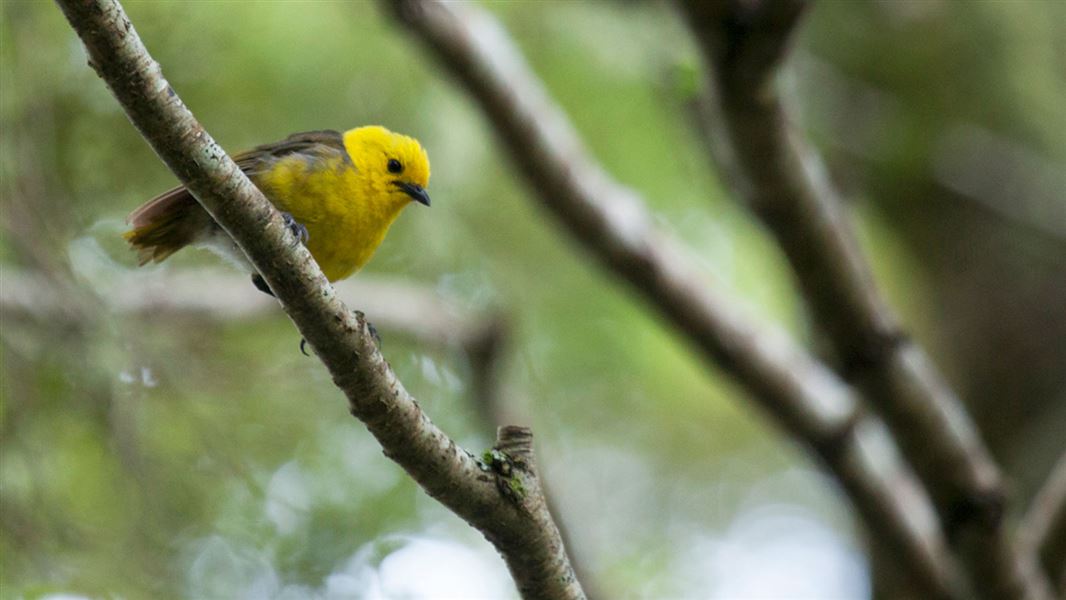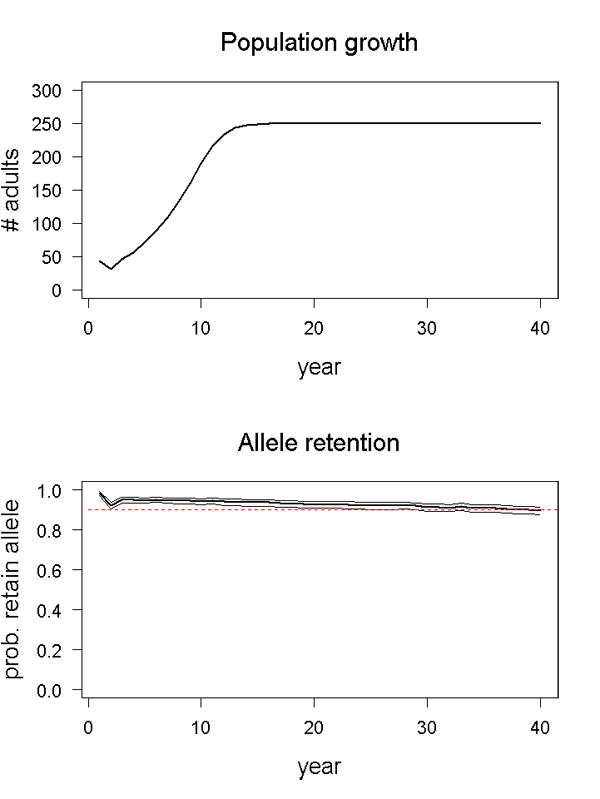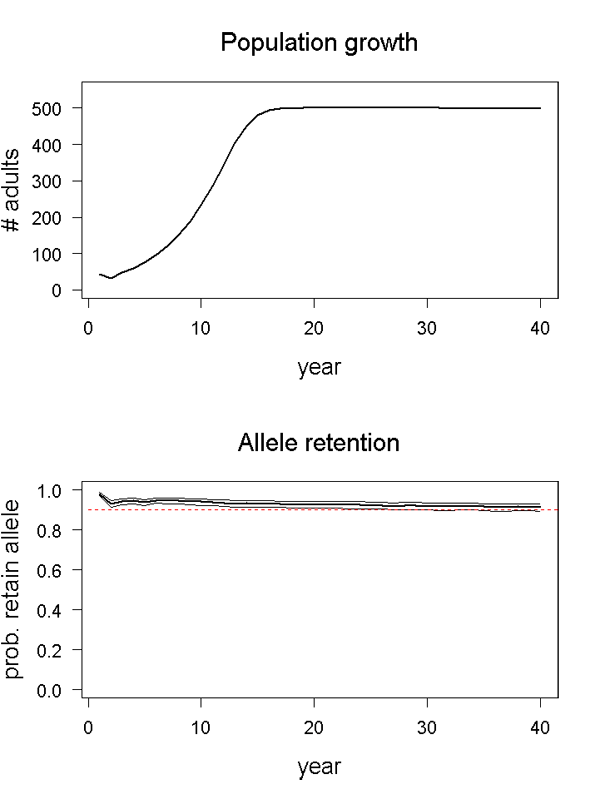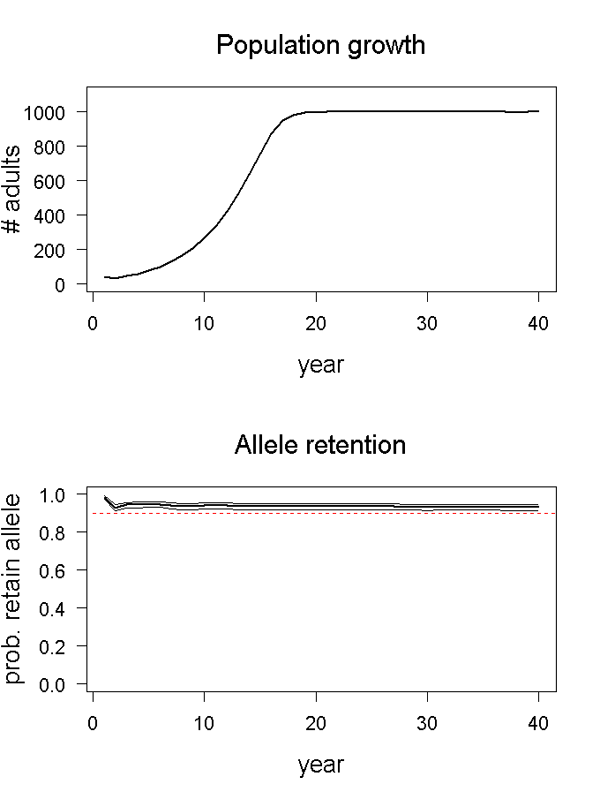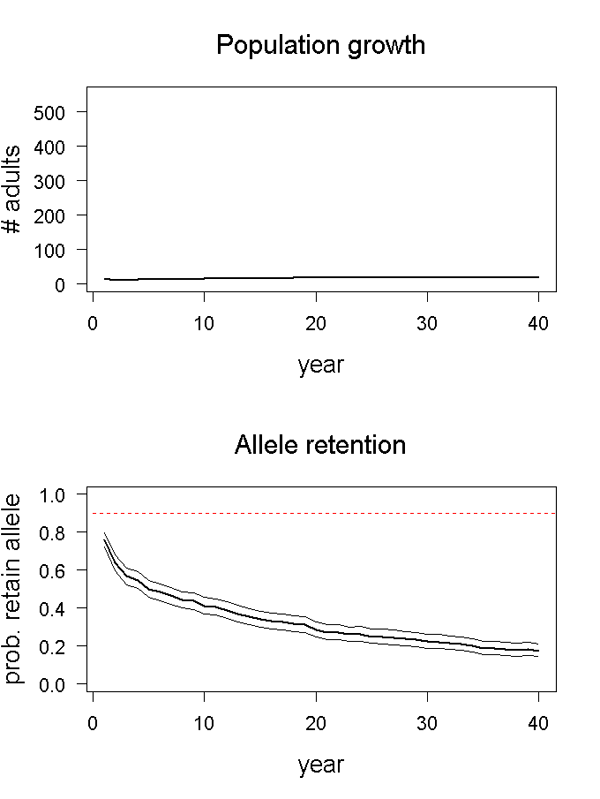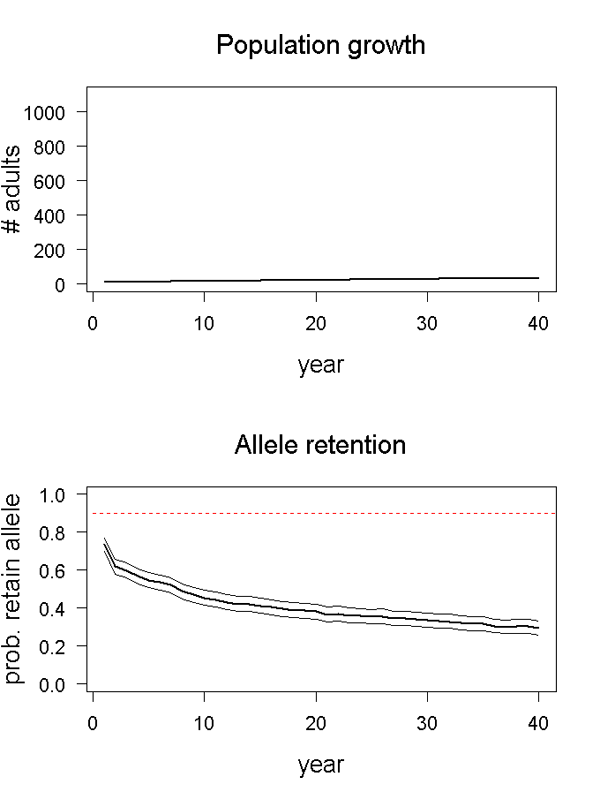First determine your habitat connectivity, habitat size and predator control levels of the translocation site; then view the predicted success of translocations for different scenarios.
Points to note if you are translocating this species
Mohua are most common in tall red and silver beech forest, where they require natural cavities for roosting and nesting.
There have been few translocations of mohua to date and very few data have been collected, making the reliability of the data used here uncertain. Monitoring the outcome of your translocation will help to provide more accurate data.
You should source birds from large populations (ideally ≥ 500 birds).
Factors of success for mohua
Founder number for maximising genetic diversity
60
Habitat connectivity
Low (isolated)
The dispersal abilities of mohua are unknown but translocations to islands, discrete mainland sites and mainland sites with low to medium connectivity have been very successful.
Medium
Unknown.
High (adjoining)
As with whiteheads, there is probably a high risk that mohua will disperse from sites with high connectivity.
Habitat size
The mohua population on predator-free Breaksea Island is thriving and has been used as a source population but the actual population density is unknown.
Small (minimum area)
170 ha (e.g. Breaksea Island, Fiordland)
Medium
360 ha
Large
≥ 1400 ha (Codfish Island / Whenua Hou)
Minimum predator control
If you are translocating mohua, you will need to maintain predators at a low density at the release site at a minimum. However, overall survival and productivity will probably be higher at sites where predators are eradicated or maintained at zero density.
Predators maintained at low density
You will need to maintain rat tracking indices at < 3% and control mustelids to best practice standards.
Predators eradicated
This requires the total eradication of all target predators with the exception (in most cases) of mice, or the maintenance of zero density year-round.
Predicted success for scenarios
Mohua: Scenario 1
Scenario: Low habitat connectivity, small habitat size, predators maintained at low density.
Data source: This projection was largely based on data obtained from published studies on mainland productivity and survival (Elliott 1996; O'Donnell et al. 1996; O'Donnell 2002), initial survival and reproductive lag (Masuda & Jamieson 2009, and senescence (Tracey et al. 2011) rather than translocation outcomes.
Conditions: 60 birds were translocated in year one; the carrying capacity of the site was 250 mohua; there was no migration.
Outcome: A viable population will likely establish and 90% of genetic diversity will be maintained over ten generations.
Mohua: Scenario 2
Scenario: Low habitat connectivity, medium habitat size, predators maintained at low density.
Data source: This projection was largely based on data obtained from published studies on mainland productivity and survival (Elliott 1996; O'Donnell et al. 1996; O'Donnell 2002), initial survival and reproductive lag (Masuda & Jamieson 2009), and senescence (Tracey et al. 2011) rather than translocation outcomes.
Conditions: 60 birds were translocated in year one; the carrying capacity of the site was 500 mohua; there was no migration.
Outcome: A viable population will likely establish and 90% of genetic diversity will be maintained over ten generations.
Mohua: Scenario 3
Scenario: Low habitat connectivity, large habitat size, predators maintained at low density.
Data source: This projection was largely based on data obtained from published studies on mainland productivity and survival (Elliott 1996; O'Donnell et al. 1996; O'Donnell 2002), initial survival and reproductive lag (Masuda & Jamieson 2009), and senescence (Tracey et al. 2011) rather than translocation outcomes.
Conditions: 60 birds were translocated in year one; the carrying capacity of the site was 1000 mohua; there was no migration.
Outcome: A viable population will likely establish and 90% of genetic diversity will be maintained over ten generations.
Mohua: Scenario 4
Scenario: High habitat connectivity, medium habitat size, predators maintained at low density.
Data source: This projection was largely based on data obtained from published studies on mainland productivity and survival (Elliott 1996; O'Donnell et al. 1996; O'Donnell 2002), initial survival and reproductive lag (Masuda & Jamieson 2009), and senescence (Tracey et al. 2011) rather than translocation outcomes. Initial survival was reduced to 0.3 and juvenile/non-breeder survival to 0.5/0.1, respectively, due to ongoing dispersal into adjoining habitat – however, although these values were chosen by an expert, there is no certainty in the results.
Conditions: 100 birds were translocated in year one; the carrying capacity of the site was 500 mohua; there was no migration.
Outcome: The high habitat connectivity will likely result in a loss of founders due to dispersal. Therefore, although a few isolated birds may persist, the population will never grow significantly and will lose a lot of genetic diversity, which may affect its long-term persistence. You could improve this result by choosing a low-connectivity site (see Scenario 2).
Mohua: Scenario 5
Scenario: High habitat connectivity, medium habitat size, predators maintained at low density.
Data source: This projection was largely based on data obtained from published studies on mainland productivity and survival (Elliott 1996; O'Donnell et al. 1996; O'Donnell 2002), initial survival and reproductive lag (Masuda & Jamieson 2009), and senescence (Tracey et al. 2011) rather than translocation outcomes. Initial survival was reduced to 0.3 and juvenile/non-breeder survival to 0.5/0.1, respectively, due to ongoing dispersal into adjoining habitat – however, although these values were chosen by an expert, there is no certainty in the results.
Conditions: 100 birds were translocated in year one; the carrying capacity of the site was 1000 mohua; there was no migration.
Outcome: The high habitat connectivity will result in a loss of founders due to dispersal. Therefore, although a few isolated birds may persist, the population will never grow significantly and will lose a lot of genetic diversity, which may affect its long-term persistence. You could improve this result by choosing a low-connectivity site (see Scenario 3).
